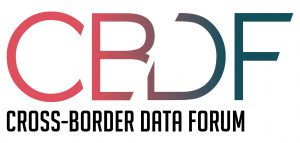For the full article posted today on the European Law Blog, click here.
Can the U.S. Government create, by non-statutory means, an independent redress authority capable of providing an effective remedy for a European person who believes that her or his rights have been infringed by an intelligence service? In this article we put forward a novel non-statutory solution that could resolve the “redress” problem in the EU/US adequacy negotiations. This solution is based on three “building blocks” inspired by methods utilized in U.S. administrative law. First, the U.S. Department of Justice should issue a binding regulation creating within that executive agency an independent “Foreign Intelligence Redress Authority” (FIRA). Second, the President should issue a separate Executive Order providing the necessary investigative powers and giving FIRA’s decisions binding effect across the intelligence agencies and other components of the U.S. government. Finally, European individuals could obtain judicial review of an independent redress decision by using the existing Administrative Procedure Act.
Our first article, published on January 31, concentrated on whether the U.S. Congress would necessarily have to enact a new statute in order to create an adequate redress mechanism. We examined political, practical, and U.S. constitutional difficulties in enacting such a statute. Based on careful attention to EU law, we concluded that relying on a non-statutory solution could be compatible with the “essential equivalence” requirements of Article 45 of the EU’s General Data Protection Regulation (GDPR), if the requisite substantive protections for redress were put into place.
This article examines, from both a U.S. and a European law perspective, measures that could address the substantive requirements, notably the deficiencies highlighted by the Court of Justice of the European Union (CJEU) in its Schrems II judgment: independence of the redress body; its ability to substantively review the requests; and its authority to issue decisions that are binding on the intelligence agencies. We discuss only the redress issues highlighted by the CJEU. We do not address here the other deficiency cited by the Court — whether U.S. surveillance statutes and procedures sufficiently incorporate principles of “necessity and proportionality” also required under EU law.
Part I of this article explains how the U.S. executive branch could create an independent administrative institution to review redress requests and complaints. The institution, which we call “FIRA”, would be similar in important ways to what in Europe is considered as an independent administrative authority, such as the several surveillance oversight/redress bodies operating in Europe and listed in the EU Agency for Fundamental Rights’ (FRA) 2017 comparative study on surveillance (p. 115 – in France, for example, the National Commission for Control of Intelligence Techniques, CNCTR). We submit that, in the U.S., such an institution could be based on a binding regulation adopted by the Department of Justice (DOJ). Despite being created by the executive branch, the independence of FIRA will be guaranteed, since leading U.S. Supreme Court precedent considers such a regulation to have binding effect and to protect members of the redress authority from interference by the President or the Attorney General.
Next, Part II of this article assesses how the U.S. executive branch could provide the necessary investigatory powers for FIRA to review European requests and complaints and to adopt decisions binding upon intelligence agencies. This could be done through a Presidential Executive Order that the President may use to limit executive discretion.
Finally, Part III of this article discusses the important question of whether the ultimate availability of judicial redress is necessary under EU law and whether there is a path under U.S. law to achieve it, despite the 2021 Supreme Court decision in the TransUnion case limiting standing in some privacy cases. We examine reasons why judicial review of decisions by the independent FIRA may not be required under EU law. Nonetheless, we describe a potential path to U.S. judicial review based on the existing Administrative Procedure Act.
…
Conclusion
In these two articles, we have sought to examine rigorously and fully the requirements of EU law with respect to redress. We also have examined U.S. constitutional law, explaining both the difficulties surrounding some solutions (for instance the problem of standing for judicial redress) and the opportunities created by some precedents (such as the protection offered to independent investigative bodies by decisions of the U.S. Supreme Court).
We are not aware of any other published proposal that wrestles in such detail with the complexity of EU and U.S. law requirements for foreign intelligence redress. We hope that our contribution helps fill this gap and presents a promising path permitting resolution of the “redress challenge” in the EU/US adequacy negotiations.
Much will depend on the details of construction and implementation for this protective mechanism. What our articles contribute is the identification of three fundamental building blocks on which a solid and long-lasting transatlantic adequacy agreement could stand. We have shown that there is a promising way to create, by non-statutory means, an independent redress authority and to provide the necessary investigative and decisional powers to respond to redress requests by European persons. We also suggest a way to successfully address the problem of standing and thereby to provide for an ultimate possibility of judicial control. Using these building blocks to create an effective redress mechanism could enable the U.S. and the EU not only to establish a solid transatlantic adequacy regime capable of resisting CJEU scrutiny but also to advance human rights more broadly.
To read more, click here.
These statements are attributable only to the authors, and their publication here does not necessarily reflect the view of the Cross-Border Data Forum or any participating individuals or organizations.

